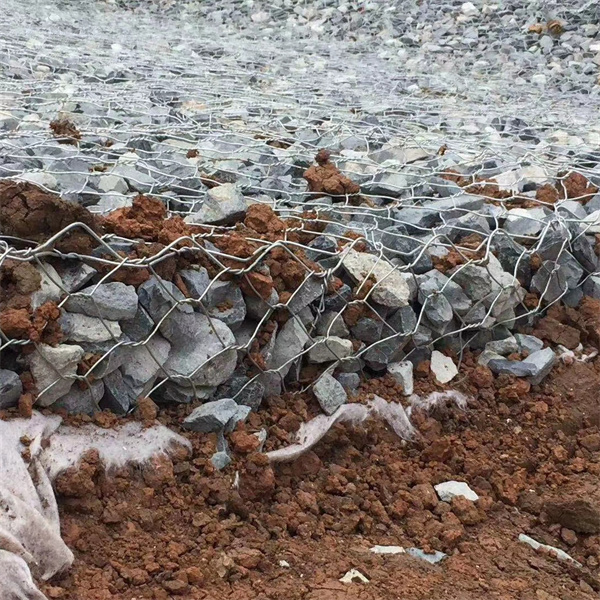nov . 15, 2024 21:52 Back to list
buy gabion wall fill
Understanding Gabion Wall Fill A Comprehensive Guide
Gabion walls are gaining popularity in modern construction and landscaping due to their unique aesthetic appeal and practical advantages. A significant component of these structures is the fill material, often simply referred to as gabion wall fill. This article explores the various types of gabion wall fill, their benefits, and considerations for those looking to invest in gabion walls.
What is a Gabion Wall?
A gabion wall is a structure made from wire mesh baskets filled with rock, soil, or other materials, creating a sturdy wall that can withstand erosion and other stresses. The name gabion comes from the Italian word gabbione, meaning large cage. These walls can serve various purposes, including retaining walls, decorative garden features, or sound barriers.
Types of Gabion Wall Fill
1. Natural Stone The most common type of gabion wall fill is natural stone. This material is not only durable but also environmentally friendly, as it blends well with the surrounding landscape. The stones come in various shapes and sizes, contributing to the wall's aesthetic appeal. Additionally, the natural color palette of the stones provides a rustic look that many homeowners and landscape designers desire.
2. Recycled Materials For those keen on sustainability, using recycled materials as gabion fill can be an innovative choice. Recycled concrete, bricks, and other construction debris can be utilized to fill gabion baskets. This choice not only reduces landfill waste but also often comes at a lower cost compared to new materials.
3. Gravel Gravel can be an excellent fill material due to its uniform size and drainage properties. Gabion walls filled with gravel support good water flow, reducing hydrostatic pressure on the structure. This makes gravel an ideal choice for retaining walls in areas prone to flooding or heavy rain.
4. Soil and Landscaping Fill Some gabion walls can be filled with soil or other landscaping materials. This method allows for planting on the surface, creating green walls that enhance natural beauty. By using soil, you can create a living wall that supports various plants and contributes to habitat creation.
Benefits of Gabion Wall Fill
- Durability Gabion walls are incredibly durable, primarily when filled with solid materials like stone or concrete. They can withstand environmental elements such as wind, rain, and even seismic activity when constructed correctly.
buy gabion wall fill

- Drainage The nature of gabion walls allows for excellent drainage
. Water can flow through the gaps in the fill material, which reduces the risk of water pooling behind the wall and causing structural issues.- Aesthetic Versatility With various fill material options available, gabion walls can be customized to suit different styles and landscapes. Whether you prefer the rustic look of natural stone or the modern appeal of recycled materials, gabion walls can be tailored to fit your vision.
- Eco-Friendly Using natural or recycled materials minimizes environmental impact, making gabion walls a sustainable choice. They can even contribute to local biodiversity if planted on top with suitable vegetation.
Considerations Before Purchasing Gabion Wall Fill
Before you decide to invest in gabion wall fill, here are some key considerations
1. Local Regulations Check with your local building authority for any restrictions regarding the construction of gabion walls. Some areas may have guidelines on height, materials, or placement.
2. Material Selection Choose the fill material based on your intended use and aesthetic preference. Consider factors like cost, availability, and environmental impact.
3. Installation Proper installation is crucial for the wall's longevity and effectiveness. Hiring professionals who are experienced with gabion construction can save you time and future repair costs.
4. Drainage Needs Analyze the site’s drainage to determine if it’s suitable for a gabion wall. Proper drainage is essential to avoid potential failure of the wall.
Conclusion
Gabion wall fill presents a compelling solution for various landscaping and structural needs. Whether filled with natural stone, recycled materials, or soil, these walls combine functionality with aesthetic elegance. By understanding the types of fill available and the benefits they offer, homeowners and designers can make informed choices that enhance their projects while benefiting the environment. If you are in the market for gabion wall fill, consider your options carefully to create a durable, attractive, and sustainable structure.
-
hesco-gabion-baskets-for-coastal-erosion-prevention
NewsAug.22,2025
-
longevity-and-durability-of-river-rock-gabion-walls
NewsAug.22,2025
-
how-to-integrate-gabion-3d-walls-in-urban-planning
NewsAug.22,2025
-
reno-mattress-gabion-applications-in-civil-engineering
NewsAug.22,2025
-
how-to-install-wire-mesh-for-gabion-baskets-properly
NewsAug.22,2025
-
best-materials-for-filling-a-chain-link-gabion
NewsAug.22,2025
-
Wire Mesh Thickness Impact on Gabion Wall Load Bearing
NewsAug.12,2025






